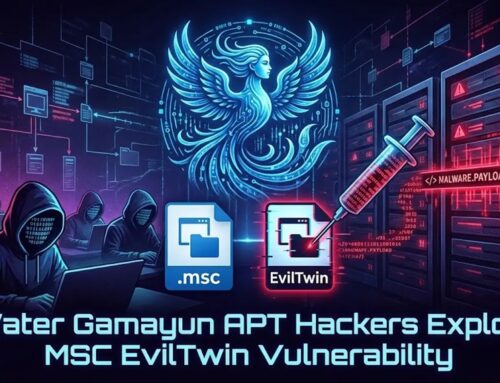
Hackers Sell Lifetime Access to WormGPT and KawaiiGPT for Just $220
The dark corners of the internet are often where innovation takes its most sinister turn. We’ve witnessed the evolution of malware, phishing tactics, and ransomware, each becoming more sophisticated with time. Now, a new, alarming development is changing the game: cybercriminals are leveraging artificial intelligence to supercharge their illicit activities. For as little as $220, malicious AI chatbots like WormGPT and KawaiiGPT are being offered with lifetime access, effectively democratizing advanced cybercrime.
This isn’t merely about convenience for threat actors; it’s about fundamentally lowering the barrier to entry for complex attacks. By removing the ethical safeguards inherent in mainstream AI models, these dark AI tools empower individuals with minimal technical skill to generate highly convincing phishing emails, craft potent ransomware, and automate hacking operations at an unprecedented scale. This shift demands immediate attention from cybersecurity professionals and organizations alike.
The Rise of Malicious AI Chatbots: WormGPT and KawaiiGPT
The digital black market thrives on novel tools that offer an advantage, and malicious AI chatbots are the latest offering. WormGPT and KawaiiGPT are prime examples of this dangerous trend. Unlike their legitimate counterparts, which are designed with ethical guidelines and safety protocols to prevent misuse, these dark AI models are purpose-built for nefarious activities.
The core proposition from cybercriminals is compelling: lifetime access for a low, one-time fee. This pricing model encourages widespread adoption among threat actors, from seasoned professionals to nascent cybercriminals. The attraction lies in their ability to bypass content filtering, generate highly believable social engineering content, and even assist in coding malicious payloads without the traditional programming expertise.
Unfettered Malice: What These Tools Enable
The unrestricted nature of WormGPT and KawaiiGPT grants cybercriminals a vast array of capabilities previously reserved for more skilled operators. Their primary functionalities include:
- Advanced Phishing and Social Engineering: These tools excel at generating highly contextualized, grammatically flawless, and emotionally manipulative phishing emails, spear-phishing messages, and social engineering scripts. This significantly increases the likelihood of victims falling prey to scams, as the AI can adapt its language and tone to target specific individuals or organizations more effectively.
- Ransomware and Malware Development: While not directly coding from scratch, these AI models can assist in outlining ransomware attack flows, generating code snippets for various malicious functions (e.g., data encryption logic, persistence mechanisms), and even drafting persuasive ransom notes. This accelerates the development and deployment of new malware strains.
- Automated Hacking Operations: From reconnaissance to exploit selection, these chatbots can provide guidance and even automate certain aspects of an attack. This includes generating scripts for scanning vulnerabilities, crafting elaborate attack scenarios, and even aiding in the exfiltration of data.
- Bypassing Content Filters: Mainstream AI models often refuse to generate malicious content. These dark AI models, however, are specifically designed to circumvent such restrictions, allowing threat actors to create content that would otherwise be blocked by legitimate AI platforms.
The Impact on Cybersecurity Defenses
The proliferation of malicious AI tools like WormGPT and KawaiiGPT presents significant challenges to existing cybersecurity defenses. Traditional signature-based detection mechanisms may struggle against AI-generated phishing emails that constantly evolve. Behavioral analysis tools will need to become more sophisticated to identify subtle anomalies introduced by AI-driven social engineering campaigns.
Furthermore, human defenders face an uphill battle against the sheer volume and increasing sophistication of attacks enabled by these AI models. The speed at which malicious content can be generated and disseminated will strain incident response teams and increase the risk of successful breaches.
Remediation Actions for Organizations
Addressing the threat posed by AI-powered cybercrime requires a multi-faceted approach. Organizations must bolster their defenses and adapt their security strategies to counter these evolving tactics.
- Employee Training and Awareness: Intensify training programs on identifying sophisticated phishing attempts, social engineering tactics, and the dangers of clicking unknown links or opening suspicious attachments. Educate employees about the evolving nature of AI-generated malicious content.
- Advanced Email and Endpoint Security: Deploy and continuously update advanced email security gateways with AI/ML-driven threat detection capabilities. Implement robust endpoint detection and response (EDR) solutions that can identify and neutralize novel threats, including those generated or orchestrated by AI.
- Multi-Factor Authentication (MFA): Enforce MFA across all systems and services. Even if credentials are compromised through an AI-generated phishing attack, MFA provides a critical additional layer of security.
- Regular Penetration Testing and Vulnerability Assessments: Conduct frequent security audits, including penetration testing, to identify weaknesses in your systems and applications that could be exploited by AI-assisted attacks.
- Threat Intelligence and Sharing: Stay informed about the latest threats and vulnerabilities. Share threat intelligence within your industry to collectively enhance defenses against emerging AI-powered attack vectors.
- Incident Response Plan Review: Regularly review and update your incident response plan to account for the speed and scale of potential AI-driven attacks. Ensure your team is prepared to quickly detect, contain, and recover from such incidents.
- Data Backup and Recovery: Implement robust, offsite backup and recovery strategies to mitigate the impact of ransomware attacks, which AI models can facilitate.
While there isn’t a specific CVE related to the tools WormGPT or KawaiiGPT themselves (as they are tools, not vulnerabilities in existing software), their use can lead to exploitation through various common vulnerabilities and techniques. For example, successful AI-generated phishing campaigns could lead to the exploitation of identity and access management vulnerabilities or unpatched software, often tracked under relevant CVEs. It’s crucial for organizations to maintain awareness of vulnerabilities like those listed in the CVE database (replace XXXX with relevant year and numbers for specific vulnerabilities).
Tools for Detection and Mitigation
To effectively combat the threats amplified by tools like WormGPT and KawaiiGPT, organizations should leverage a combination of security solutions:
| Tool Name | Purpose | Link |
|---|---|---|
| Proofpoint / Mimecast | Advanced Email Security, Phishing Detection | Proofpoint / Mimecast |
| CrowdStrike Falcon / SentinelOne | Endpoint Detection and Response (EDR) | CrowdStrike / SentinelOne |
| KnowBe4 / Cofense | Security Awareness Training | KnowBe4 / Cofense |
| Nessus / Qualys | Vulnerability Management, Scanning | Nessus / Qualys |
| Splunk / Elastic (ELK Stack) | SIEM (Security Information and Event Management) | Splunk / Elastic |
Conclusion: Adapting to the AI-Enhanced Threat Landscape
The availability of tools like WormGPT and KawaiiGPT for a mere $220 marks a critical inflection point in the cybersecurity landscape. It signifies the mainstreaming of AI-powered cybercrime, empowering a broader range of malicious actors to conduct highly effective attacks with minimal technical expertise. This development underscores the urgent need for organizations to proactively adapt their security posture, invest in advanced threat detection and prevention technologies, and prioritize continuous employee education.
Ignoring this shift is not an option. Cybersecurity professionals must recognize that the adversary is now leveraging sophisticated AI, and our defenses must evolve at an even faster pace to protect critical assets and maintain digital integrity.





